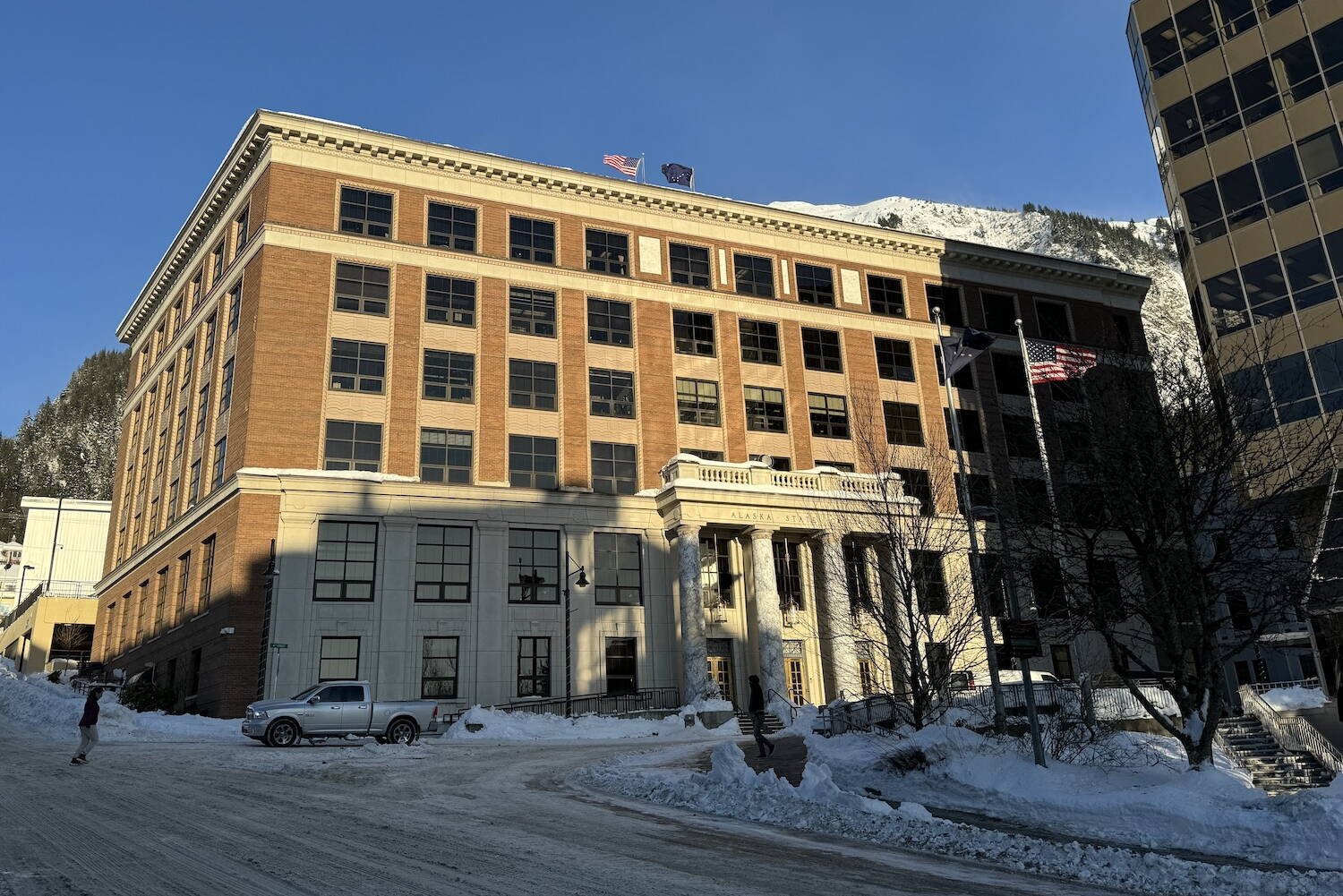The head of the state corporation in charge of a long-planned trans-Alaska natural gas pipeline is once again Alaska’s top-paid public executive.
Frank Richards, president of the Alaska Gasline Development Corp., received $479,588 in compensation during 2023, according to the latest version of the state’s annual executive compensation report, released in January.
Compensation includes salary as well as things like cashed-out leave, moving expenses and travel costs. Some “other” compensation was included atop Richards’ salary in 2023, but that didn’t materially affect the rankings. He has been Alaska’s top-paid executive since 2021.
The annual compensation report includes only executives, not all public employees, but Richards has traditionally topped the list among all employees as well.
The state’s second-highest-paid executive in 2023 was University of Alaska President Pat Pitney, according to the report. She was compensated $403,848.
Pitney was followed by Alaska Railroad President and CEO Bill O’Leary, at $382,616; Alaska Housing Finance Corp. Executive Director Bryan Butcher, $356,387; and Alaska Permanent Fund Corp. Executive Director Deven Mitchell, $350,134.
Gov. Mike Dunleavy received $144,536 in compensation during 2023, the report said. Under a plan adopted last year by a state commission, the governor’s salary will rise to about $176,000, and the salaries of state commissioners will be about $168,000.
There is no single ranking of all state employees’ gross compensation; overtime and bonus pay can add tens of thousands of dollars to the salaries of regular employees, and specialists can earn as much as the state’s executives.
A 2022 analysis of all executive branch employees’ compensation found a forensic psychiatrist who grossed $415,000 during the state’s 2021 fiscal year, likely making him the state’s No. 2 top-paid employee during that period.
State legislators’ compensation during 2023 is listed in a separate report. Last year, legislators received a salary of $50,407.50, relocation expenses, travel expenses, office expenses (up to $20,000 for senators or $12,000 for Representatives) and $307 per legislative-session day for personal expenses. The Senate President and Speaker of the House receive an extra $500 atop their normal salaries.
The highest-compensated legislator in 2023 was Rep. Neal Foster, D-Nome, who received $154,103.98. He was followed by Sen. Donny Olson, D-Golovin, $153,278.39; Sen. Lyman Hoffman, D-Bethel, $144,117.23; Sen. Gary Stevens, R-Kodiak, $141,962.39; and Sen. Bert Stedman, R-Sitka, $139,541.54.
Those figures do not include a pay increase effective in 2024. Starting this year, legislators will be paid $84,000 salary.
According to the latest available data, Alaska’s average annual wage is $68,568.
• James Brooks is a longtime Alaska reporter, having previously worked at the Anchorage Daily News, Juneau Empire, Kodiak Mirror and Fairbanks Daily News-Miner. This article originally appeared online at alaskabeacon.com. Alaska Beacon, an affiliate of States Newsroom, is an independent, nonpartisan news organization focused on connecting Alaskans to their state government.

